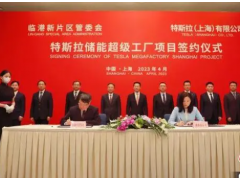In recent days, exchanges and cooperation between Japan and South Korea in various fields such as security, economy and trade have picked up. The US factor behind it is obvious. Washington intends to make greater efforts to promote its Asia-Pacific allies to build a production and supply chain that excludes China. However, China, Japan, and South Korea have long been important economic and trade partners to each other. China is the largest trading partner of Japan and South Korea, and South Korea and Japan are China's fourth and fifth largest trading partners, respectively. It is in the common interests of China, Japan, South Korea and the region to jointly maintain the stability and smooth flow of regional and global production and supply chains. In this regard, relying on the important opportunities provided by RCEP, which has already come into force, to deepen China-Japan-ROK economic and trade cooperation will not only benefit the three countries, but also benefit the overall stability and prosperity of the region.
There is huge room for the development of service trade among China, Japan and South Korea
Under the framework of RCEP, China, Japan and South Korea will deepen economic and trade cooperation, focusing on promoting service trade. Judging from the data, the scale of service trade among China, Japan and South Korea has not only continued to increase, but also has a large room for growth. From 2012 to 2021, the total service trade volume of the three countries will increase from US$1.02 trillion to US$1.4 trillion. However, judging from the ratio of this total service trade to GDP, it will only be 5.74% in 2021, which is far lower than the global level of 11.80% in the same period. Preliminary estimates suggest that if the level of China-Japan-Korea service trade doubles and its share in GDP approaches or reaches the global average level, it will bring about an additional market of at least US$1.4 trillion.
China is the largest market of Japan and South Korea. This is because China's economic structural transformation contains a huge demand for service trade, which provides a huge space for the development of service trade among China, Japan and South Korea. From 2012 to 2021, the service trade volume between China and Japan increased from US$25.731 billion to US$31.423 billion; the service trade volume between China and South Korea increased from US$22.288 billion to US$32.445 billion. Moreover, China has maintained a long-term deficit in service trade with Japan and South Korea. From 2012 to 2021, China's service trade deficits with Japan and South Korea reached US$109.005 billion and US$40.891 billion, respectively. Take trade in digital services as an example. China, Japan and South Korea are quite complementary. From 2013 to 2021, the digital service trade complementarity index of China, Japan, and China and South Korea exceeded 1 in most years, which means that the degree of complementarity in the field of digital service trade is constantly improving.
At present, the proportion of service trade in the bilateral trade of China, Japan and South Korea is lower than the global average. In 2021, the proportion of service trade in bilateral trade between China and Japan, China and South Korea, and Japan and South Korea will be 7.8%, 8.22% and 11.06%, respectively, which is lower than the global average of 21.4%. To adapt to the general trend of global service trade development, China, Japan and South Korea should focus their economic and trade cooperation on service trade, thereby forming new trade growth points and promoting the upgrading of the trade structure of the three countries.
The common market opening of the three countries is very important
Under the RCEP framework, the key to deepening service trade cooperation among China, Japan and South Korea lies in market opening. Some countries' attempts to "decouple and break links" will seriously damage market opening. China, Japan and South Korea are all beneficiaries of free trade based on markets and rules. It has been in the past and it will be in the future. From 1995 to 2021, the proportion of Japan's exports of goods and services to GDP increased from 8.8% to 18.4%; South Korea increased from 25.7% to 42%; in many years, its external demand contributed more to economic growth than domestic demand. From a realistic point of view, the IPEF supply chain agreement passed not long ago attempts to build an exclusive supply chain system based on values in the Asia-Pacific. game. For example, the United States prohibits South Korean chip manufacturers from filling the gap in the United States' market share in China; Japan includes 23 categories including advanced chip manufacturing equipment in the export control list. According to past data, 60% of South Korea's chips are exported to China, and 30% of Japan's semiconductors are exported to China. Whether it is based on their own interests or market development trends, Japan and South Korea need to grasp the development trend of RCEP, grasp the development trend of the Asia-Pacific region, enhance strategic autonomy, be vigilant against the practice of "decoupling and breaking chains", and promote market-based and rule-based greater market opening.
Moreover, the common market opening of China, Japan and South Korea is very important. The OECD’s calculations show that Korea’s service trade restriction index for foreign investment is 80% higher than the OECD average level; Japan’s is roughly the same as the OECD average level, but its service trade restriction index (STRI) is lower than that of the United States and the United Kingdom. , Germany, France and other major developed countries twice. In other words, promoting the opening of the service industry market is a common task for China, Japan and South Korea. Comply with the trend of scientific and technological progress, give full play to the comparative advantages of China, Japan and South Korea in R&D, design and manufacturing, establish a China-Japan-Korea manufacturing industry alliance in related industries, and accelerate the implementation of production equipment, technical services, joint research and development, and technology under the manufacturing industry. Trade policies such as free movement of personnel, promote the integration of advanced manufacturing and modern service industries in Northeast Asia through cooperation in the productive service industry between China, Japan and South Korea. To adapt to the development trend of the digital economy, China, Japan, and South Korea need to actively explore relevant arrangements for the safe and orderly flow of data; on the premise of ensuring that the data flow is safe and controllable, expand the opening of the data field, realize the full aggregation of data, and promote the formation of a data element market in Northeast Asia.




